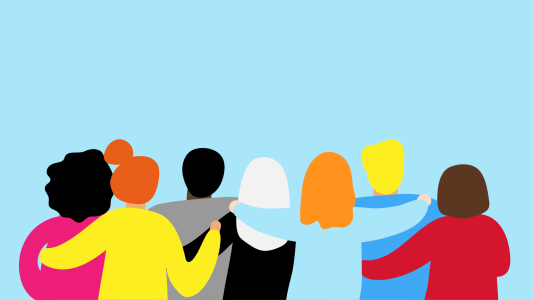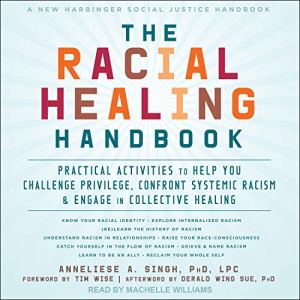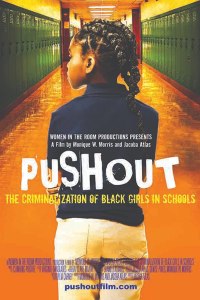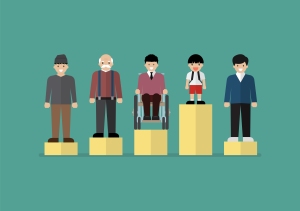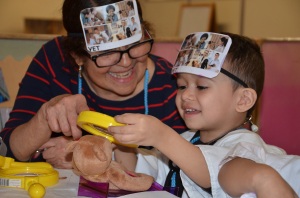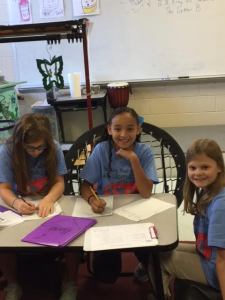Arts Education
Where the Light Travels: Creative Media Builds Confidence and Digital Literacy
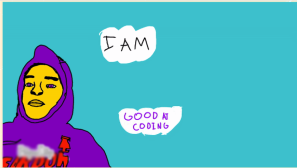
“Soon the digital divide will not be between the haves and the have-nots. It will be between the know-hows and the non-know-hows.”
– Stanford lecturer Howard Rheingold
Where the Light Travels is an after-school enrichment class designed to integrate photography and digital media into core areas of learning such as English Language Arts and Social Science. This project supports refugee youth in San Diego, creating engagement and connection by bridging hands-on creativity with technology and art.
The need for technology and visual communication has never been more important. This was highlighted as the world was sent into isolation with the impacts of COVID-19. “We use digital photos and videos to share our understanding, to connect with our communities, and to express ourselves,” stated Jana McBeath, Media Educator and Youth Council Coordinator with Outside the Lens. Receiving a three-year grant from the McCarthey Dressman Education Foundation is allowing McBeath’s project, Where the Light Travels, to transform an elementary after school digital media class into a safe space to build confidence while increasing digital and media literacies. She has seen firsthand how having media skills to use in life can change a student’s focus from self-identity, to family, community and eventually become a new language to use worldwide.
What were the goals of the project and how were they achieved?
Where the Light Travels was implemented virtually in partnership with the San Diego Refugee Tutoring Program as an after-school class with goals to:
- integrate ELA and core academic subjects using photography, videography, animation, and mixed media
- build confidence and engagement in students and their academic subjects
- create a safe space to encourage storytelling, identity and creativity
- showcase projects at a community exhibit honoring student work from throughout the year
Craft boxes with various art supplies and props were provided, as well as sealed envelopes with project materials. iPads loaded with apps for animation, photography, digital art, film editing, and other resources were also given to each student. To help combat screen fatigue, now that all of the students were learning online every day, the focus of the projects relied on the incorporation of tactile and hands-on activities, even though the project was designed to enhance digital literacy.
Consistent engagement became one of the major components of success. This was achieved in many ways. In addition to opening the sealed project envelopes online together each week, an emphasis was put on daily connection, using digital tools like Flipgrid and Google Chat for sharing jokes, art and ideas separate from the specific project.
Students were encouraged to experiment, explore and create in their free time in whatever interested them most and report back with self-directed projects. This was an opportunity to see what interested each student most, and reinforce the ELA and Skill standards in the discussion and evaluation of each student’s work. The consistent engagement, paired with the flexibility to adapt the curriculum to address varying curiosities, concerns and interests made the pivot to a virtual afterschool program arguably more successful than originally envisioned.
What progress did they make to their goals?
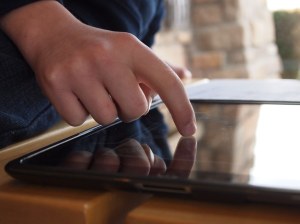
The projects created by the students really speak to the progress made in this program. The confidence of the students shines throughout and the results were far reaching. From comedic YouTube videos to dance performances and tactile science experiments, all of the projects incorporated some form of digital media problem solving, verbal and written communication, which addressed the crucial ELA, 21st Century Skills and digital media literacy needs.
What challenges were experienced along the way and what are the ideas for improving the project?
The onset of COVID-19 changed the goal for creative outlets to a necessity and was the biggest challenge for the project. What was meant to be an engaging in person experience now had to be redesigned to an accessible virtual setting that still allowed for meaningful connections for students who were already spending the day learning online. A lot of inventiveness went into pivoting this project to be something joyful for the students to look forward to during what ended up being a very difficult year for them in so many ways.
How has Where the Light Travels affected the learning of students and/or teachers?
Based on feedback from the students, parents, tutors and partners of the San Diego Refugee Tutoring Program, the effect on students was solidly positive. Engagement was achieved, as well as a returning student base. The students were truly able to nurture and develop their identity using their own passions and hobbies to explore interests and curiosities using the iPads and craft kits.
Exciting plans for the Future
As the project entered its second year, still virtual, the number of participating students doubled and included all previous students from the first year. Whether the program continues online, in person, or possibly even as a hybrid, the plans for the future include continuing with the student-led curriculum, utilizing techniques to stay highly adaptable, focus on mixed media projects, introducing advanced photographic processes, and keeping the asynchronous work and connections between classes.
Additional Resources
Learn more about supporting digital literacy for learners who are refugees:
Design Thinking in Middle School: A Human-Centered Approach to 21st Century Learning Vision
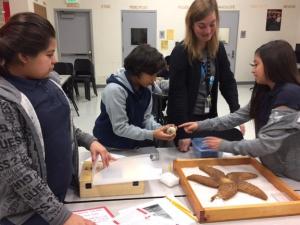
Technology advances at a rapid pace. So fast that it often outpaces advancements in education policy and practice. Students are often way ahead of the curve while teachers who learned pedagogical methods in days when there were many less avenues for incorporating technology into classrooms lag far behind them in terms of technological facility. This is compounded by the fact that every student learns in a different way, and with more and more options, it gets increasingly difficult to cater to the individual needs of students. This is what makes the Design Thinking in Middle School: A Human-Centered Approach to 21st Century Learning Vision project really stand out. They aim to bolster the technological aptitude of their educators while designing more individualized curriculum for their students. In pursuit of this vision for student learning, a team of teachers at Southeast Middle School applied with their Board of Education to open a magnet center on campus. The focus of this magnet center is to bring a three “I” – Interest, Impact, and Innovation- driven approach to teaching and learning.
Goals
In order to better understand where they find themselves as of their last progress report, it’s important to understand the goals they set out to accomplish.
Students will work on collaborative, cross-curricular projects that center on design thinking, a powerful learning tool that teaches students to use empathy and critical thinking to tackle problems of any kind from a human-centered point of view. In their model, the teacher’s role is to provide opportunities for discovery and to guide students to understanding through their innovation projects. The transition from a teacher-centered, depository learning framework to a student-centered, design-based learning approach requires teachers to work in a highly collaborative environment to develop cross-curricular and student-centered projects.
So, in their first year, how did they go about doing this?
Before they could start they had to answer a few key questions for themselves, and anyone looking to replicate this program would do well to do the same.
- What resources are currently available and/or necessary to obtain in order to successfully realize their stated vision?
- How might the concepts learned in the theme-based professional development activities be applied to their specific school context?
- What effect(s) might a design thinking approach to teaching and learning have on school performance, as measured by five instructional pillars (teaching) and the ISTE 21st century skill standards (learning)?
These questions guided their approach and the following methods were applied.
- Conduct a needs assessment and establish a teacher growth plan,
- Plan and implement teacher developed lessons tailored to the classroom context, and
- Evaluate the impact of the project on student learning and extract teacher learning through reflective practices.
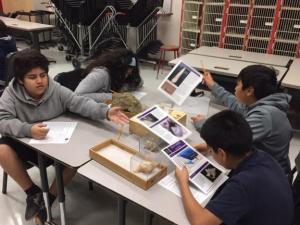
Their first year found its focus in the first two milestones. One of their priorities this year was to help the new magnet teachers build a theoretical grounding in the foundations of design thinking in K-12 education. They found early on in the project that this looked different for every teacher, based on their subject area, experience level, and their personal interests in areas of growth. Because of these disparate levels of experience, as a team, they decided that more experienced teachers would take on a more robust menu of learning opportunities that were designed to fill in gaps in theoretical and clinical knowledge and to prepare themselves to be teacher leaders in the new school. Their primary learning focus as a teacher leader team was to increase their capacity to understand and teach in alignment with a program theme of design thinking through project-based learning.
So, a year in, where are they?
Their collection of professional development opportunities during Year One has helped teachers develop a greater capacity for executing the magnet program’s vision of developing a human-centered approach to 21st century learning. Teacher leaders are using their learnings from model school visits, workshop and trainings, and collaborative planning sessions, to develop a comprehensive instructional technology plan, to plan and implement theme-based lessons tailored to their classroom contexts, and to develop a comprehensive introductory professional development plan for novice teachers. This included the teacher leaders themselves sharing their learnings through professional development sessions that they curated from their experiences in Year One of the project.
Students were able to develop their skills as digital citizens, innovative designers, knowledge constructors, creative communicators, empowered learners, and global collaborators through design-based, project-based learning tasks throughout the school year. Additionally, they were able to showcase their learning at multiple community events at their school site and within the larger learning community of South Gate. News and pictures of the events were shared on the school website at <http://southeastms-lausdca.schoolloop.com/>. Teacher-leaders are currently designing their digital portfolios to showcase their student projects on the magnet program website <www.dreamsmagnet.org>.
But no project is without challenges. What were some that they faced?
The biggest thing they had to contend with was finding substitute teachers within the budget. This allowed the participating educators to take time off from class for professional development. This is being solved in the second year by reallocating some of the grant money to pay for that.
It’s never too late to educate yourself on the latest technology. Even though chances are, by the time you’ve mastered it there will be something new. But that shouldn’t stop us from trying to narrow the technology gap between students and educators, and this project sounds like one way to do it.
Further reading
Playmaking Puts Fundamentals in the Spotlight

LAMusArt’s Playmaking project approached their goals with a lot of ambition and spirit. Their program was an exciting one, aimed at engaging students ages 9 – 11 in the fundamentals of playwriting over the course of 10 weeks, culminating in a full scale performance of the student written plays by adult actors. It can be extremely difficult to schedule several adult actors to appear in one place at any one time, but in Los Angeles this difficulty can be compounded. So the fact that they were able to get 11 kids plays up and running cast with professional actors is something that on it’s own should be applauded.
Project Goals
But before we get into what they accomplished, let’s take a dive into what goals they set out to accomplish.
1) to give underserved students in their East Los Angeles communities a public opportunity to experience success and recognition through artistic expression, authorship, and performance regardless of race or gender.
2) to aid the growth and development of each student’s important life skills, including their cognitive and emotional evolution, and their creative, academic, social, and behavioral progress by way of artistic opportunities.
3) to validate each student’s unique voice by giving them an opportunity to tell and see their own stories about their respective experiences.
4) to bridge the gap between our community and the life-affirming power of the arts, which they’ve been traditionally barred from due to barriers like language, finances, and exposure.
5) to provide students with the academic attention they lack in public schools, including inclusive and enriching creative programs and better student/adult ratios.
4) to increase student learning in fundamental theater concepts and practices.
Now, a number of these goals seem a bit hard to quantify. Many of which won’t be fully known until long after the student has left the program. But, you might be surprised by the results that the parents are reporting. But we’ll get to that shortly.
So how did they accomplish their goals?
Over the course of 10 weeks, each student kept a notebook of their weekly writing exercises, vocabulary lessons, and understanding of key concepts. Each student was able to grasp these exercises, as proven by the completion of their original plays. Although some plays were more complex than others, every student completed a play with at least two characters and a central conflict between those characters. The driving idea that was used to emphasize dramatic storytelling was “Want. Conflict. Change.” They started the course by establishing that every character must have a strong want or wish. To move the story forward, they put characters with different wants in a scene together to establish a high-stakes conflict, in which the characters want to get in the way of each other. To resolve the story, they needed a change, from either one or both characters, or an outside force. The idea of “Want. Conflict. Change.” was interpreted in different ways by each student, resulting in wildly different, but entirely vibrant and entertaining works. And having personally attended the event I can say that what resulted was a wildly surreal night of shows. Even though their concepts were simple… or often nonsensical (like the boy and his friend, and a slice of pizza) what they demonstrated was unfiltered creativity. It’s not often that playwrights get to write without self consciousness, and while it’s doubtful that they approached it without self doubt — the final product betrayed a sense of fun, unfettered imagination, and clear encouragement to tell the story they want to tell.
So where are the students now and how are they doing?
According to reports from the parents, the students have seen vast improvement in all areas that the program set out to address.
- 100% said they would recommend the program to others;
- 100% said that the elementary school their student attends does not offer a program similar to Playmaking, which tells us the program is unique and needed in the community;
- 100% said their student’s literacy and writing skills developed over the 10 week course;
- 100% said their student’s listening skills developed over the 10 week course; and
- 100% said their collaboration and creativity skills developed over the 10 week course.
Now, I’m no math teacher, but 100% returns across the board seems to me to be pretty good results. If not pretty great.
But no program is without its challenges. How can this one improve?
The most notable challenge was the coordination of rehearsal time for all eleven groups of adult actors and directors. It was difficult to fit adequate rehearsal time for all eleven plays into a two week period, causing them to schedule additional rehearsals with actors and a prolonged tech period in the theater space.
Another challenge they faced was giving the composer sufficient time to compose an original song for each play. Because the songs and plays were not written until Play Day, the composer was unable to read the plays and lyrics until a day before the first rehearsal, giving barely enough time to compose a new piece. They believe this can be improved by having the composer present on Play Day to aid the students in writing their lyrics. This will also give the composer a better idea of what the student has in mind stylistically for their song.
Completely surmountable challenges aside, this program seems to have legs that are going to carry it into the future and help improve the confidence, writing, and collaboration skills for any students involved.
Learn more
Cigar Box Odyssey: Enriching Creative Process Skills
Fourth graders stimulate the thinking processes involved in creativity through an Academic Enrichment Grant

As we face many challenges in educating our children, it is important to emphasize creative thinking and problem solving. Creative thinking and problem-solving are essential parts of the process to turn ideas into innovation and open up avenues to creativity.
What were the goals of the Cigar Box Odyssey project?
The overall goal of the Cigar Box Odyssey project was to teach creativity by integrating the Outcomes of their gifted program with the Objectives of their Fourth Grade Curriculum. Their goal was achieved by emphasizing the gifted process skills of performance, presentation, research, creativity, self-directed learning, group dynamics, and understanding and creating art. The students analyzed the creative process used by musicians to design the cigar box guitar using the SCAMPER (Substitute; Combine; Adapt; Modify; Put to another use; Eliminate; Reverse) technique.
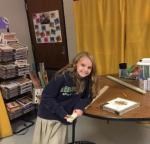
What is the SCAMPER technique?
The SCAMPER technique (introduced Bob Eberle, as described in the design thinking blog, Designorate, by Rafiq Elmansy) is based on the idea that what is new is actually an adaptation of something that already existed. It is considered one of the easiest and most direct methods to creative thinking. The SCAMPER keywords noted above represent the necessary questions students should address during the creative thinking process. For example, for Substitute one could ask, “What part of the process can be substituted without affecting the whole project?” or for Combine, one could ask, “Can we merge two steps of the process?”
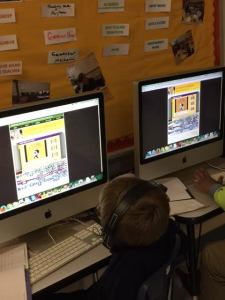
- Project caption “We begin research and building guitars at the same time. We use sites like PBS Blues Road Trip and Carnegie Hall History of the Blues.”
What skills did students use to build their Cigar Box Guitars?

The students researched the origin of the Delta Blues and how the Blues form travelled and changed, influencing other American music forms. They used measuring skills, basic knowledge of sound, and creative principles to build their own cigar box guitars. Then the students wrote original songs and performed them in a Blues Café that was set up in their classroom.
The students attended the New Orleans Cigar Box Guitar Music Festival where they were well received and able to meet professional performers. And, to top it off they have been invited to perform at the Festival next year. To prepare for their performance, they plan to invite T. J. Wheeler, creator of the Blues in Schools program, to College Park and help the students prepare for this performance. He taught this year’s fourth graders a few things in just a short time at the festival.
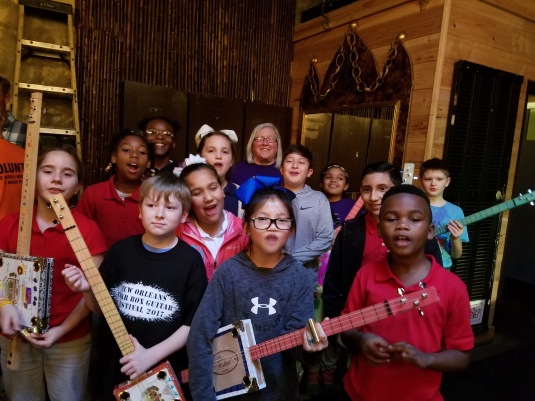
How has this program affected learning?
Because of this program the students have experienced the intersection of research and reality. They have had a taste of living what they researched and were exposed to adults who built the same instruments and performed the same kind of music. They were also able to extend the program to include some cutting-edge technology by 3D printing their own guitar picks.
So, what’s next for the students?
With the purchase of a 3D printer students will learn how to program CAD and create (not just print) their own picks. So, both the technology and the performance components of the program will be lifted to a higher plane when they learn to program CAD and perform formally in front of a festival audience.
Further reading:
Art History Enrichment Club: Painting to Understand Human Culture
Two things that are rarely taught in tandem, outside of college elective courses, are Art and History, yet these two disciplines are inextricably linked. Art gives us a window to the minds of humans living in another time. Every detail can tell a story, from the subject and the setting to the style of a time period. Each of these things gives us hints as to what life, attitudes, and technology were like when those pieces were created. Art as old as ancient Egyptian hieroglyphs as well as that created in modern day can shed light on how humanity has evolved and provide a glimpse to human potential. Some might argue, if you don’t know the history – how can you create the future?
This important connection between human expression and history has inpired the educators at NYOS Charter School in Pflugerville, Texas, in the Art History Enrichment Club. According to the project team, the goal is for students to better understand how history and art are interwoven throughout the ages. This understanding will allow students from all backgrounds to connect the art they studied to the community and world around them. By studying the craft of painting in a variety of techniques, they will not only grow as artists, but also make connections between advances in art, history and culture, from paintings in famous museums to those found in their local community.

How does art history after school enrichment support cognitive and social skills in intermediate grades?
The Art History Club was open to students in 4th and 5th grades. Students applied, with parent permission, and thirty of them decided to stay after school one day a week for an hour. This allowed the school to serve up to 20% of their student population. The classes were offered for 20 weeks and were capped off with a trip to the Blanton Art Museum in Austin, Texas. Not only did the project allow students of all backgrounds to connect with history and their communities, it also gave them a new visual language to identify styles and techniques. Research has shown that students who are enrolled in art programs increase cognitive and social skills that are then applied in daily classroom activities.
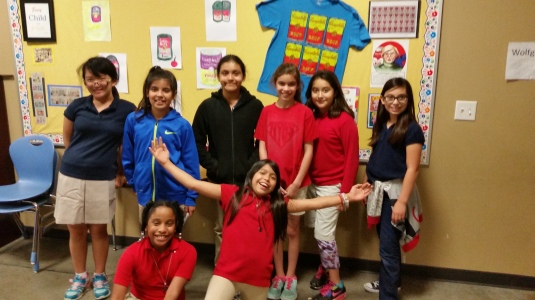
An important part of this enrichment program is that it wasn’t just passive observation. These students received hands on experience, so to speak. Not only did students see and study the art and varying techniques, they also put those lessons to the test. A weekly display of the information about an artist and the students work was also shared in a common area for all students to view. Additionally, there was an art show displaying student’s artwork open to the NYOS community. NYOS also has a collaborative relationship with local business. These business were able to display artwork allowing students to share their achievements with their local community.
What other benefits came from this project?
According to Melissa Hefner, project awardee, the project was designed to make broad connections between art, history, and real life: “The first goal of the project was to teach how history and art were interwoven. The second goal was to show the different styles of art that have been created throughout history, starting with Egyptian Art and ending with Modern Art. The third goal was for students to identify famous pieces of artwork on clothing, TV shows, movies, posters, etc. making the connection that masterpieces are all around us. The fourth goal was to have them identify art in their community and then add their own art to the community.”

The students have discussed art throughout many historical periods and created pieces of artwork in many different styles in the after school program, every Thursday for an hour. In April, students showcased their work at Fine Arts Night, and even the parents managed to learn a little something they didn’t know previously. In the beginning of May they took the field trip to a local art museum and graffiti wall. A great contrast between fine and street art, and a great lesson about the importance and impact of both. As a direct result, students have become aware of how much art exists around them in the books they read, historical events they study, current events they hear about, and even in their social media feeds.
This project is off to a strong start and continue to impress us at the McCarthey Dressman Education Foundation. Here’s to a few more years of making art and creating history!
Learn More
Mariachi membership tunes up grades and turns on pride
Members of Tucson’s Mariachi Casabel Youth Organization take pride in new costumes and higher grades

Last year the McCarthey Dressman Education Foundation funded the Mariachi Cascabel Youth Organization (MCYO), an innovative program attempting to combine academics with community engagement using music, specifically Mariachi music, as the binding agent. With Tucson’s Sunnyside Unified School District’s diminished music budgets there didn’t seem to be much hope for the group, especially since they needed new costumes. For mariachi, image is just as important as musical ability. Their costumes, called Trajes de Charro, don’t come cheap, especially if you want quality and authenticity. Organizer Daniel Dong proposed a unique project for improving not only the image of the musicians but also their success in math and science. Funded in 2013 by the McCarthey Dressman Education Foundation, this unique and special music education program has already made an exceptional impact.
… students in arts-integrated classrooms are more creative,
engaged,
and effective at problem solving
than their counterparts who are not in arts-integrated classrooms.”
– Arts in Education Research Study, Kennedy Center ArtsEdge

Setting the tone for academic success
Research has indicated that students that who receive music education tend to do better, across the board, academically. This program takes it a step further by including a cultural component that has true community value. Daniel Dong’s idea was to help the Mariachi Cascabal Youth Organization Program, serving a primarily Hispanic district, be available to play in the community for all the most important celebrations. Even before funding they were able to play at a number of events including the Annual Latina Breast Cancer Conference and Mexican Mother’s Day festivals. He also coordinated within the school district to help MCYO get regular gigs at school carnivals and other related events.
Because within the district there is no other program like this, demand to get in is high. Here’s where the alignment with academics found a harmonious fit. The program instituted a requirement where students must retain passing grades or seek tutoring for those subjects. Now, not only were the students getting the benefits of a musical education, they were also more motivated to perform well in their other courses.
Costumes and instruments build pride, Tutors nurture brains
Because looking authentic was important for their success as legitimate mariachis within the community, the Foundation’s investment also went toward new costumes for the organization. They have currently received sixteen out of seventeen Trajes and are just waiting for the final jacket to come in to make their ensemble complete. The funding also provided new instruments for the group including two Prelude Violins, two Michoacána Vihuelas and four Yamaha Guitars from a local music company. Furthermore, students received three digital video cameras from Walmart to help document their experiments with the MCYO.
While a couple of students have fallen behind in their other academic courses, the tutors in math and science that have been provided are helping them reach their academic goals. In September, they held a large parent meeting to inform students and parents of all the benefits students receive by being involved in the MCYO. The prospects laid out got many parents excited which in turn helps the students realize the value of such a program.

There were, as always, some unexpected but not insurmountable costs. Trajes wear out quickly and they found they needed to bring their tailor up from Mexico City to do the measurements to make sure they got the highest quality Trajes. The Trajes were completed and shipped back to America in late April.
Culturally relevant music education and tutoring add up to better grades
From the beginning, the educators responsible for this project saw the value of a tutor. While the students were less than happy, initially, about being required to attend tutoring and a few stopped coming due to the requirements, many of those students returned and participated in the tutoring and watched their grades improve – a win for everyone involved.
Project educators also reported on how they could improve on this project for the next school year. Though they noted how enthusiastic parents were about tutoring, they couldn’t help but acknowledge how adverse the students were to it. They discussed ways to better sell that idea to students, so that this program and others patterned after it would find a lot more success. There were also important considerations that could be fine tuned in the future, such as streamlining the auditions, assessment of initial abilities and tutoring placement procedures.
Anecdotally, Daniel Dong reported, one of the biggest challenges was procuring the Trajes, which took about six months to obtain. Because they were authentically handmade in Mexico, however, the time was worth the wait.
All in all, the MCYO has been successful with their approach to using music education and tutoring to improve student success and creativity. They are on track to meet and exceed their proposed goal “to acquire mariachi outfits and musical instruments to help motivate students to be more engaged in their academics and to be positive role models in their community.”
What did the students have to say about their work?
MCYO members wrote about their experiences in the program and about attending the Tucson International Mariachi Conference.
Similar programs could be proposed in your other schools; take advantage of your local musical genres that impact your community the way that Mariachi music does in Tucson, Arizona, will be your real challenge.
For more information on the magic of music in academic enrichment, read on:
- Playing a musical instrument could boost brain function in kids (Digital Journal, 2014)
- Using Music in the Classroom to Inspire Creative Expression (Edutopia, 2014)
- New Evidence Links Music Education, Higher Test Scores (Pacific Standard, 2013)

